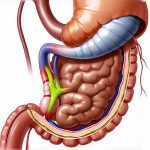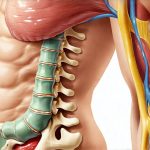Post-meal reflux, commonly experienced as heartburn or acid indigestion, is a frustrating condition affecting millions. Often triggered by dietary choices and eating habits, it arises when stomach acid flows back up into the esophagus. While medication can offer temporary relief, addressing the root causes through lifestyle adjustments often proves far more sustainable and beneficial. Many individuals unknowingly contribute to their reflux symptoms with rapid eating and heightened stress levels during mealtimes. This article explores how consciously slowing down your eating pace and incorporating relaxation techniques can significantly minimize post-meal discomfort and improve digestive health. It’s about understanding the connection between mind, body, and mealtime experience – a holistic approach to wellbeing that extends beyond simply avoiding trigger foods.
The physiological process of digestion is remarkably complex, requiring time and focused effort from various organs. Rushing through meals bypasses essential stages like adequate chewing and initial breakdown of food in the mouth. This places an undue burden on the stomach, which must work harder to process larger, less-broken-down boluses of food. Stress further exacerbates the situation by diverting blood flow away from the digestive system and towards perceived threats, hindering optimal function. Furthermore, a stressed state can lead to increased gastric acid production, amplifying the potential for reflux. Addressing these factors is not about deprivation; it’s about cultivating mindful eating habits that support natural digestive processes and overall wellbeing.
Slow Eating: The Cornerstone of Reflux Prevention
The concept of slow eating isn’t merely about taking longer to finish your meal – it’s a conscious practice of savoring each bite, paying attention to hunger cues, and creating a more relaxed dining environment. It requires actively resisting the urge to rush, even when time is limited or distractions abound. This mindful approach allows for better digestion and reduces the likelihood of overeating, which can also contribute to reflux. Essentially, slow eating aligns with how our bodies are designed to process food – gradually and efficiently.
The benefits extend beyond just digestive comfort. By slowing down, we become more attuned to our body’s signals of fullness, preventing overconsumption and potentially aiding in weight management. This increased awareness also fosters a deeper appreciation for the food itself, making mealtimes more enjoyable and nourishing on all levels. It’s about transforming eating from a hurried task into a mindful experience that supports both physical and mental health. Consider how often we eat without truly tasting our food – slow eating restores this vital connection.
Practicing slow eating can be integrated into daily life with simple adjustments:
– Put your fork down between bites.
– Chew each bite thoroughly (aim for 20-30 chews).
– Engage in conversation, but avoid overly stimulating topics that might increase stress.
– Minimize distractions like phones and television.
– Focus on the flavors, textures, and aromas of your food.
– Take small bites to begin with.
Relaxation Techniques: Calming Digestion
Stress is a major contributor to reflux symptoms, as mentioned earlier. When we’re stressed, our bodies enter “fight or flight” mode, which prioritizes immediate survival over non-essential functions like digestion. This leads to increased stomach acid production, reduced blood flow to the digestive system, and potentially even spasms in the esophageal sphincter – all factors that can trigger reflux. Incorporating relaxation techniques before, during, and after meals helps counteract these effects and promotes optimal digestive function. The goal isn’t to eliminate stress entirely (that’s unrealistic), but rather to manage it effectively and create a more conducive environment for digestion.
Relaxation doesn’t need to be complicated or time-consuming. Even a few minutes of focused breathing or mindfulness can make a significant difference. The key is finding techniques that resonate with you personally and incorporating them into your routine consistently. It’s about creating pockets of calm amidst the chaos of daily life, allowing your body to transition from a state of stress to one of relaxed digestion. Remember, a calm mind often leads to a calmer stomach.
Diaphragmatic Breathing for Digestive Ease
Diaphragmatic breathing, also known as belly breathing, is a simple yet powerful technique that can effectively reduce stress and promote relaxation. It involves consciously utilizing the diaphragm – the large muscle at the base of your lungs – to draw deep, full breaths. This type of breathing helps activate the parasympathetic nervous system, which is responsible for “rest and digest” functions.
Here’s how to practice diaphragmatic breathing:
1. Find a comfortable position, either sitting or lying down.
2. Place one hand on your chest and the other on your abdomen.
3. Slowly inhale deeply through your nose, allowing your abdomen to rise while keeping your chest relatively still. You should feel your hand on your abdomen move outwards.
4. Exhale slowly through your mouth, gently contracting your abdominal muscles and letting your abdomen fall.
5. Repeat this process for 5-10 minutes, focusing on the sensation of your breath.
Regular practice can significantly reduce stress levels and improve digestive function. It’s particularly effective to do a few deep breaths before you begin eating, setting the tone for a more relaxed mealtime experience.
Progressive Muscle Relaxation: Releasing Tension
Progressive muscle relaxation (PMR) involves systematically tensing and then releasing different muscle groups in your body. This process helps you become aware of tension held within your muscles and learn how to release it consciously. The act of releasing tension signals the brain that it’s safe to relax, promoting a sense of calm and reducing overall stress levels.
A basic PMR routine might involve these steps:
1. Find a quiet place where you won’t be disturbed.
2. Start with your toes: tense them tightly for 5-10 seconds, then release and notice the feeling of relaxation.
3. Gradually work your way up through your body, tensing and releasing muscle groups in your feet, calves, thighs, abdomen, chest, arms, hands, shoulders, neck, and face.
4. Focus on the difference between tension and relaxation with each muscle group.
PMR can be incorporated into your pre-meal routine or practiced at any time you feel stressed or anxious. It’s a valuable tool for managing stress and promoting overall wellbeing.
Mindfulness Meditation: Cultivating Present Moment Awareness
Mindfulness meditation involves focusing on the present moment without judgment. This practice helps cultivate awareness of your thoughts, feelings, and bodily sensations, allowing you to observe them without getting caught up in them. By bringing mindful attention to your mealtime experience, you can reduce stress, savor your food more fully, and improve digestion.
- Begin by finding a quiet space and sitting comfortably.
- Close your eyes gently or lower your gaze.
- Focus on your breath as it enters and leaves your body.
- When thoughts arise (and they will), simply acknowledge them without judgment and redirect your attention back to your breath.
- Extend this practice to your meal: pay attention to the colors, textures, smells, and tastes of your food. Notice how your body responds to each bite.
These techniques aren’t quick fixes, but consistent practice can lead to significant improvements in both digestive health and overall wellbeing. The key is to find what works best for you and integrate it into your daily routine. Remember, preventing post-meal reflux isn’t just about what you eat; it’s also about how you eat and the mental state you bring to mealtimes. Understanding irregular eating habits can further help in managing reflux symptoms, as consistent meal timings support digestive regularity. Additionally, being aware of how long-term indigestion can affect your body helps you be proactive about preventing it. Finally, when traveling or on vacation, utilizing comprehensive strategies is essential to maintain digestive health.


















